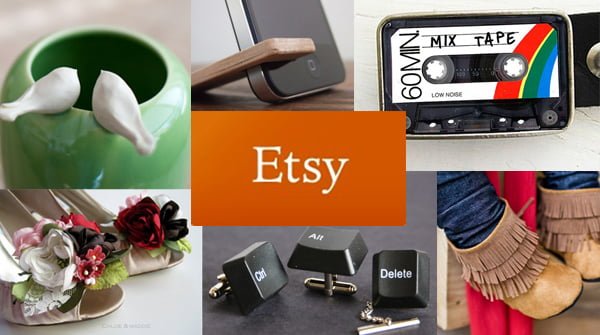Etsy is one of the most popular online marketplaces for handmade, unique, and vintage items. If you have a passion for vintage treasures and want to turn it into a profitable business, selling vintage items on Etsy could be an excellent opportunity. This guide will walk you through everything you need to know about selling vintage items on Etsy, from understanding what qualifies as vintage to optimizing your listings and marketing your products effectively.
How to Sell Vintage Items on Etsy
Are you passionate about vintage treasures and looking to turn your hobby into a profitable business? Etsy is a fantastic platform for selling vintage items, allowing sellers to connect with buyers who appreciate unique, one-of-a-kind pieces with a history. Whether you’re an experienced collector or just starting out, selling vintage on Etsy offers endless opportunities to showcase your finds to a global audience. In this guide, we’ll walk you through the essential steps for setting up your Etsy shop, curating and pricing your vintage items, and effectively marketing your products to maximize sales. Get ready to turn your love for vintage into a successful venture on Etsy!

What Qualifies as a Vintage Item on Etsy?
Before you start selling, it’s essential to understand Etsy’s definition of “vintage.” On Etsy, an item is considered vintage if it is at least 20 years old. This means that in 2024, anything made in or before 2004 can be sold as vintage. This category includes a wide range of items, such as clothing, accessories, home decor, furniture, and more. Ensuring that your items meet this criterion is crucial to maintaining the integrity of your shop and staying compliant with Etsy’s policies.
Step 1: Finding and Curating Vintage Items
To successfully sell vintage items on Etsy, you’ll need a keen eye for quality and authenticity. Here are some tips for sourcing vintage items:
- Thrift Stores and Estate Sales: These are excellent places to find vintage items at affordable prices. Look for pieces that are in good condition, unique, and have the potential to appeal to a broad audience.
- Flea Markets and Auctions: Flea markets and auctions can be treasure troves for vintage finds. Be sure to research the value and demand for items before purchasing them.
- Online Marketplaces: Websites like eBay or Facebook Marketplace can also be great sources for vintage items. However, be cautious and verify the authenticity of items before buying.
- Family Heirlooms: Don’t overlook items you might already own. Family heirlooms or items passed down through generations can be valuable and carry a unique history that buyers on Etsy may find appealing.
Step 2: Creating Your Etsy Shop
Once you’ve sourced a collection of vintage items, it’s time to set up your Etsy shop. Here’s how to get started:
- Sign Up for an Etsy Account: If you don’t already have an account, create one at Etsy.com.
- Choose a Shop Name: Select a name that reflects the nature of your shop and the types of vintage items you’ll be selling. Make sure it’s unique, memorable, and relevant to your brand.
- Set Up Your Shop: Complete your shop’s profile, including a bio, shop policies (shipping, returns, etc.), and a banner that visually represents your brand.
- List Your Items: Start listing your vintage items with detailed descriptions, high-quality photos, and appropriate tags. The more information you provide, the better.
Step 3: Writing Effective Vintage Item Listings
Creating compelling listings is crucial to attracting potential buyers. Here’s how to optimize your listings:
- Title Optimization: Use clear, descriptive titles that include keywords buyers might use when searching for vintage items. For example, “1960s Vintage Floral Dress – Bohemian Maxi Dress” combines style, era, and relevant keywords.
- Detailed Descriptions: Provide thorough descriptions of each item, including its history, condition, size, and any unique features. Mention any imperfections to maintain transparency with buyers.
- High-Quality Photos: Take clear, well-lit photos from multiple angles. Highlight any special details and provide close-ups of any flaws. The quality of your photos can significantly impact a buyer’s decision.
- Keywords and Tags: Use relevant keywords in your titles and descriptions to improve search visibility. Include up to 13 tags per listing to help your items appear in search results.
Step 4: Pricing Your Vintage Items
Pricing vintage items can be challenging, but it’s important to find a balance between making a profit and offering fair prices. Consider the following when pricing your items:
- Research Market Prices: Look at similar items on Etsy and other platforms to gauge pricing. Factor in the rarity, condition, and demand for the item.
- Cost of Goods and Fees: Include the cost of acquiring the item, any restoration or cleaning costs, and Etsy’s fees (listing fees, transaction fees, and payment processing fees).
- Profit Margin: Determine your desired profit margin. Typically, a margin of 30-50% is reasonable for vintage items, but this can vary depending on the item’s value and demand.
- Adjust for Discounts: If you plan to offer discounts or sales, ensure your pricing strategy accounts for this to maintain profitability.
Step 5: Marketing Your Vintage Shop
Effective marketing is key to driving traffic to your Etsy shop and increasing sales. Here are some strategies to promote your vintage items:
- Social Media: Leverage platforms like Instagram, Pinterest, and Facebook to showcase your vintage items and connect with potential customers. Use relevant hashtags, engage with followers, and share behind-the-scenes content to build your brand.
- Email Marketing: Build an email list of interested customers and send regular newsletters featuring new items, promotions, and shop updates.
- Collaborate with Influencers: Partner with influencers or bloggers who have a strong following in the vintage or fashion niche. They can help promote your shop to a broader audience.
- Etsy Ads: Consider using Etsy’s advertising platform to boost the visibility of your listings. Set a budget that aligns with your marketing goals and monitor the performance of your ads to optimize your campaigns.
Step 6: Providing Excellent Customer Service
Customer service is crucial for building a loyal customer base and maintaining a positive reputation on Etsy. Here’s how to ensure a great customer experience:
- Prompt Communication: Respond to customer inquiries quickly and professionally. Clear communication can prevent misunderstandings and build trust.
- Accurate Shipping Estimates: Provide accurate shipping times and keep customers informed if there are any delays. Offering tracking information can also enhance the buyer’s experience.
- Thoughtful Packaging: Package your vintage items carefully to prevent damage during shipping. Consider adding a personalized thank-you note or small gift to make the experience memorable for the buyer.
- Fair Return Policy: Establish a fair return policy that balances protecting your shop with accommodating reasonable customer requests. Make sure this policy is clearly stated in your shop’s description.
Selling vintage items on Etsy can be a rewarding way to turn your passion for antiques and collectibles into a thriving business. By carefully curating your collection, optimizing your listings, pricing effectively, and marketing your shop, you can attract a loyal customer base and achieve success on Etsy. Remember, the key to selling vintage items is authenticity, quality, and excellent customer service. Start your vintage Etsy shop today and begin sharing your unique finds with the world!






